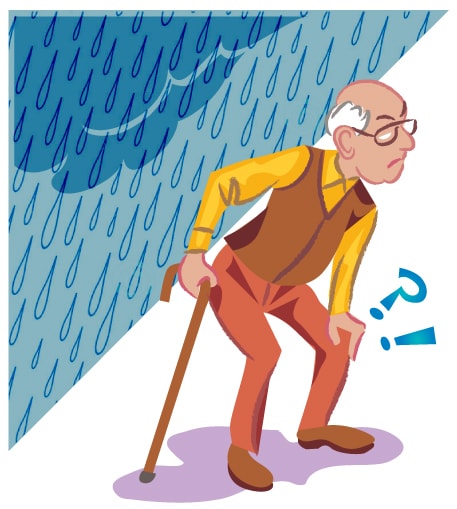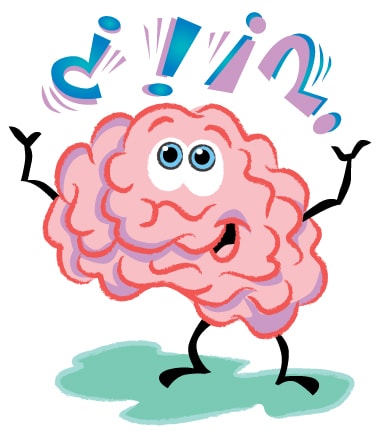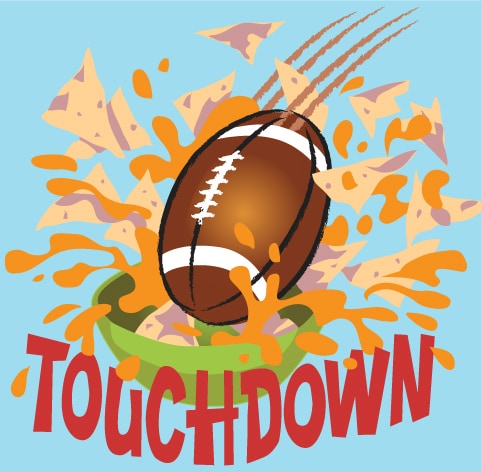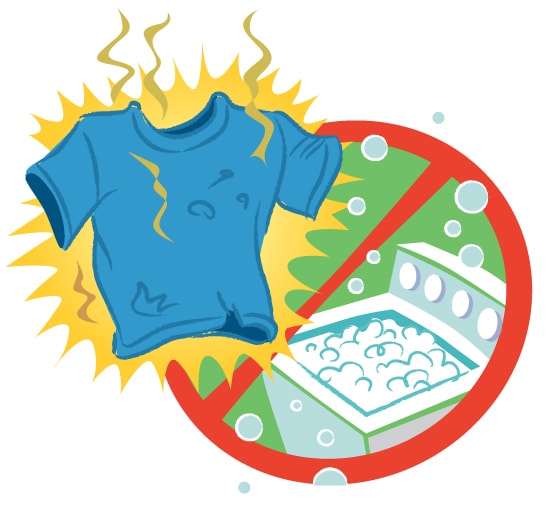How do you explain the craziness that occurs on the full moon? Or the fact that your grandpa knows it will rain by the pain in his knees?

Well, I have some bad news for you. These connections aren’t exactly true. They’re common examples of a phenomenon called the “illusory correlation.” I’m going to talk about the illusory correlation, how we form false connections between two events, and why it’s very important to be aware of the ways our brain tricks us into believing stereotypes and other false correlations.
What is the Illusory Correlation?
The illusory correlation occurs when someone believes that there is a relationship between two people, events, or behaviors, even though there is no logical way to connect them. The illusory correlation fools us into believing stereotypes, superstitions, old wives’ tales, and other silly ideas.

Sometimes, the perceived connection between two events is harmless. It’s silly to think that a certain number always brings you luck. But forming these connections is completely normal.
Unfortunately, if left unchecked, the illusory correlation can be dangerous. Racial stereotypes and other stereotypes against minorities come from the illusory correlation. Failing to acknowledge that we may be creating false connections between one group and one type of event can lead us to form harmful beliefs based on lies.
What Causes the Illusory Correlation?
Why do we create these connections in the first place? Why do we form harmful beliefs? I have two answers for you.
The first explanation for the illusory correlation comes from how our brain works. There are an infinite amount of events that we witness every day and have the ability to remember. Our brain cannot process and store all of these events. So it picks the ones that stand out the most to us.
This could be a violent event or an exciting moment in sports. You might remember that the day you went to the hospital was Friday the 13th. Or that your sports team won a huge game the day you ate your mom’s homemade nacho dip. Those connections stick with us more than the Friday the 13th in which you didn’t go to the hospital or all of the other snacks you’ve eaten on the days when your sports team won.

Once we have formed these connections, we only see those connections. This is a related phenomenon to the illusory correlation called the “invisible correlation.” Sure, we go through many experiences that can logically disprove the illusory correlation. But we fail to see them and recognize them as a way to dispute the beliefs that we have formed.
This is similar to the “confirmation bias,” the subject of one of my latest videos. Confirmation bias leads us to interpret experiences in a way that confirms our beliefs. If your team loses and there is no nacho dip in sight, you might use those two events to confirm your beliefs about the connection between nacho dip and your team’s success.
Studies That Defined The Illusory Correlation
The illusory correlation was coined by two psychologists who were, oddly enough, criticizing the work of other psychologists. Specifically, they were questioning how the famous Rorschach test was being used. Nowadays, the Rorschach test is a silly set of inkblot tests that we might see in movies or TV shows. But back in the 1960s, it was being used to “diagnose” homosexuality. (Back in the 1960s, being gay was considered a mental disorder.)
Psychologists believed that if men saw certain “signs” in the Rorschach test, they were gay. But psychologists Chapman and Chapman weren’t buying it.
The psychologists surveyed the people administering the test, who saw a strong correlation between recognizing certain symbols on the test and being gay. Then they looked at the actual results of the test and saw that heterosexual men were just as likely to recognize those certain symbols. If all men, gay or straight, were likely to see the same symbols, then using the Rorschach test to “diagnose” homosexuality wasn’t a valid practice.
Examples of the Illusory Correlation in Real Life (Sports, Allergies, Etc.)
This discovery of the illusory correlation is not surprising. Minorities are more likely to be subjected to the illusory correlation. Psychologists were more likely to associate gay men with certain symbols on the Rorschach test, even though there was no real connection between the two. Chapman and Chapman have since debunked this correlation, but many correlations that perpetuate false assumptions and stereotypes against minorities remain.
Take the long list of 911 calls made by white people against black people who were minding their business. This is the illusory correlation at work. George Zimmerman killed a young black boy wearing a hoodie and was found not guilty of murder because the illusory correlation told him that the young black boy was “suspicious.”
The media and a long history of racism are more likely to associate racial minorities with all types of crimes. But when you look at the facts, you realize these connections are not always based on facts. If you look just at marijuana crimes, white people are just as likely to use marijuana as African Americans, but they are arrested at significantly lower rates. This also goes for other types of illicit drugs.
Of course, not all examples of the illusory correlation perpetuate negative stereotypes and put people in danger. A less serious example of the illusory correlation is thinking that pain in your joints means it’s going to rain. Or that the moment you step away from the nacho dip, your team will lose. These examples aren’t harmful, but they are also not based on the truth or a logical connection between two events.
Think about some of the illusory correlations that exist in your own life. There are some connections that you have made that you believe “explain” certain events in your life. Think about rituals that you perform to get a certain outcome or beliefs that you might have about a group of people. Are these based on facts? Or are you simply holding onto experiences and information confirming your beliefs and biases?
Again, the illusory correlation is completely normal. But when it’s used to perpetuate harmful stereotypes, it can be downright dangerous. Be aware of how you connect events and form beliefs about how two unrelated experiences may or may not be connected. Question your beliefs - you might start to see the world differently.
Example 1: Lucky T-Shirts

Do you have a lucky T-shirt that you wear for every football game? Or a special tie that you wear to your most important business meetings? You may not even wash it because you fear it will lose its “powers.”
I hate to burst your bubble, but that article of clothing probably doesn’t have any special powers. Maybe you wore the shirt once, and your team won that day. Maybe you wore that shirt again, and your team won again. But wearing a specific shirt doesn’t affect your team’s ability to play. The Illusory Correlation is just telling you that you have a “lucky shirt.”
Example 2: Buying Lottery Tickets at a Certain Store, Time of Day…
The Illusory Correlation tries to tell us that we can manipulate luck and make ourselves more lucky. If we want to talk about luck, we must discuss lottery tickets. People can win money from the lottery, so they will go to strange lengths to produce their luck and maybe hit the jackpot.
There are a lot of lottery “rituals” out there. Some people wear a specific pair of pants when they buy lottery tickets. Or they put their ticket in a Bible before they scratch the ticket and reveal their winnings. The list goes on and on.
If someone fails to see that they could win the lottery without wearing their lucky pants or going through their rituals, they have fallen prey to the Illusory Correlation.
Example 3: Fear of One Type of Animal or Breed After a Bad Incident
If you have to tell someone “Not All _____,” you are probably undoing the work of the Illusory Correlation. Remember, the Illusory Correlation causes us to overlook a lot of possible or real results and emphasize one or a small handful of occurrences.
This can, unfortunately, cause the creation, belief, or reinforcement of stereotypes. Let’s say you are walking in a park and encounter a pit bull. You try to pet the pitbull, but it gets aggressive with you. You walk away believing that because the dog was a pitbull, it was aggressive with you.

There are plenty of sweet, gentle, loving pit bulls. But your one experience, paired with the Illusory Correlation, caused you to overlook or forget all of the nice pit bulls that you have met in your life. Based on that one experience, you believe or reinforce the idea that pit bulls are aggressive.
Example 4: “Allergies” Gone Untested
Sometimes, there are ways to discover whether a correlation or causation exists between two events. If you want to know whether or not you are allergic to a certain type of food, for example, you can go to a doctor and get tested. However, many people forgo the test and rely on what they have discovered from personal experience. Let’s say you go to a sushi restaurant, eat scallops, and later get very sick. You also ate a lot of other foods at the restaurant, and you might have eaten scallops before with no problem, but you conclude that you are allergic to scallops.
How to Fight the Illusory Correlation
- Educate Yourself: The first step to combat the illusory correlation is understanding what it is. Being aware of the concept itself can make you more vigilant in spotting it in your daily life.
- Challenge Your Beliefs: Don't accept your beliefs at face value. Now and then, take a step back and critically analyze why you believe what you do. Is it based on a single incident, or is there concrete evidence to back it up?
- Seek Multiple Perspectives: We often find comfort in our personal experiences, but it's essential to remember that individual experiences can be misleading. Listen to the stories and perspectives of others, especially when they differ from yours. This can offer a more rounded view of reality.
- Broaden Your Evidence Base: Consider the evidence you use to support your beliefs. Is it based on one or two events, or is it consistent over multiple instances? The question is whether other evidence may exist in someone else’s life or research that challenges your beliefs.
- Avoid Overgeneralization: Be wary of making blanket statements based on limited information. For example, if you had a negative experience with a particular dog breed, it doesn't mean all dogs of that breed are the same.
- Consult Experts: When in doubt, seek expert opinions or research. If you believe you’re allergic to a particular food, get tested. If you’re forming an opinion about a particular topic, read studies or articles from reputable sources.
- Reflect on Past Misjudgments: Think about times in the past when you might have wrongly associated two events. Reflecting on these can be a reminder of how easy it is to fall into the trap of the illusory correlation.
Example: Do you believe that you are allergic to scallops because of a handful of instances, or have you sought out testing from a specialist? Are all pit bulls scary, or have you just run into one or two dogs who don't define the whole breed?
Testing Your Knowledge of the Illusory Correlation
Quiz time! Let’s see what you’ve learned about the Illusory Correlation.
Question 1:
The Illusory Correlation is a perceived connection between two variables, even when the connection is not based on logic. What causes this phenomenon to occur?
Answer:
A: The way our brain selects which memories to store
B: Confirmation bias
C: Ignoring “invisible correlations”
D: All of the above
Answer:
D! All of the above. There are a lot of factors that go into building an illusory correlation in our minds.
Question 2:
When was the illusory correlation “discovered?”A: The 1850s
B: The 1920s
C: The 1960s
Answer:
C! The 1960s.
Question 3:
The “Illusory Correlation” was coined by two psychologists after they critiqued what famous test that was used by psychologists?
Answer:
The Rorschach, or “ink-blot” tests
